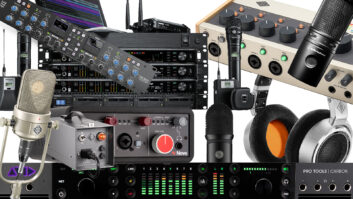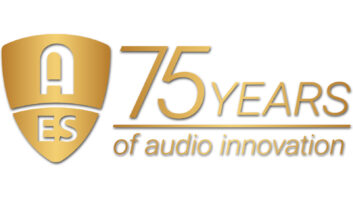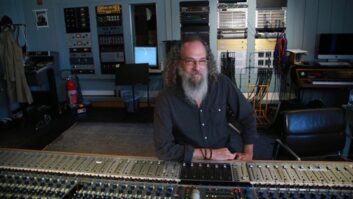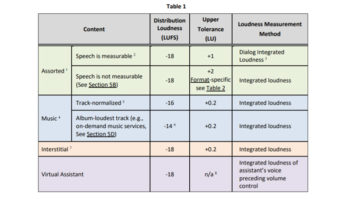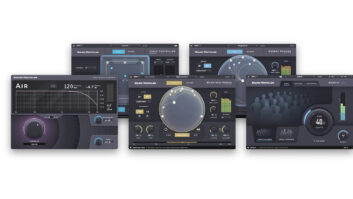I’m a 3D audio tech nut. I’ve always been interested in surround and have had opportunities to make some great recordings over the years. But where 5.1 is limited to those with access to playback systems, Spatial Audio spans more users from mobile up to the big screen, and the business is growing.
Tim Merel at Techcrunch says: “…mobile AR could become the primary driver of a $108 billion VR/AR market by 2021 (underperform $94 billion, outperform $122 billion), with AR taking the lion’s share of $83 billion and VR $25 billion. So it’s the wild wild west and content will be king once the delivery platforms are established.” The last six words in the previous sentence are the keys to the kingdom. Insiders speculate that Apple and Samsung will release AR-enabled phones (Augmented Reality), with a VR solution (Virtual Reality) hot on its heels. With so much money in play, it’s just a matter of time.
Gaming is the obvious application for VR but for amateurs and pros alike, the tools to produce slick-looking 3D, 4k content with post-produced audio are here. At NAB back in April, I saw my friend and 3D audio guru Michel Henein in the Vuze booth demoing the new RS360 Cinema software from VisiSonics (pictured on this page.) Michel describes it as “a standalone spatial audio toolset designed for easy authoring of 3D audio for 360 video.” It offers post production pros an intuitive, 3D interface that shows audio tracks overlaid as objects onto 360 video. It features MIDI timecode for synchronization and streaming audio from any Native DAW directly into the app. Henein explains, “Ambisonics (up to 7th order) and object-based spatial exporting is supported with automatic meta-data injection for YouTube and Facebook 360 video platform.” The software was designed in partnership with Humaneyes, makers of the first-ever 4K stereoscopic 3D 360 video camera under $800. You can see more about the software at RealSpace3Daudio.com.
At the last AES in Los Angeles and at NAB this year, spatial audio was a small but impressive array of exhibitors. NAB called their area the Virtual Audio and 3D Pavilion which will be back again in 2018. Last year at AES in Los Angeles, the Audio 4 VR Expo was in a hallway upstairs at the LACC, but this year at the Javits it will be expanded covering both pro and consumer audio in a demo area with a presentation stage.
Besides the toys on the floor, there will be a Spatial Audio Track that is scheduled to include some great presentations. Edgar Choueiri of Princeton University will talk about the challenges and solutions surrounding the delivery of binaural audio through headphones (BAH) and loudspeakers (BAL). He’ll cover the recently developed BACCH-HP headphones technology, allowing 100% of listeners to perceive binaural audio as a well-externalized 3D image outside, and far from their heads. Albert Leusink of Tumble and Yaw will outline the differences and similarities between spatial and stereo workflows, binaural rendering engines and its impact on phase and frequency response in the Ambisonic soundfield.
Kedar Shashidhar from OSSIC in San Diego will use examples of spatially mixed recordings from Grammy Award winning artists in various genres, including EDM, pop and jazz. His tutorial will cover basic concepts in spatial audio, signal flow, creative tips and best practices when producing a track in Higher Order Ambisonics, plus distribution and release of 3D audio content. Nuno Fonseca of the Polytechnic Institute of Leiria, Portugal, and founder of Sound Particles, a randomization plug-in with intelligence, will cut through the confusion covering the most common 3D audio concepts, formats and technologies, demystifying the terms Ambisonics/HOA, Binaural, HRTF/HRIR, channel-based audio, object-based audio, Dolby Atmos, Auro 3D and more. Paul Special, Founder of SAS and Richard Warp with Intonic in Emeryville, Calif., will co-present and talk about 3D workflows and the growing networks of pros working in immersive audio. Finally, Ravish Mehra of Oculus Research will discuss the challenges surrounding the generation of acoustic signals that reproduce the properties of natural environments through headphones. Heady stuff (pun intended).
So what does it mean for Joes and pros? All this new tech and gear means possible new production revenue streams for immersive sound-for-picture—from gaming, concert videos and motion pictures, down to consumer gigs like web content for travel and resort industries, streamed commercials in the YouTube format, and more. If you’re at AES check out the Audio 4 VR Expo and the presentations. It will expand your mind, and maybe your wallet.

